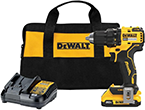There are times when we all will be away from the home, or office, for a significant amount of time. When these times come up, it is usually best to pack away your computer for that time. This is called PC storage. You will want to pack away your computer, laptop, or other computing system in order to protect it from a variety of different potential disasters. Some of these disasters can range from the extreme such as flood, to the everyday such as power surges or theft. The next time you are looking to store your PC, follow these guidelines to help protect your computer.
- Backup. Whenever you are going to pack away your computer system, it is a good idea to back everything up. The reason that you will want to back everything up is simple, over time you are running the risk of having your data lost or corrupted. There are two main methods that you can use to create a back up of your system. The first is through the use of an external hard drive; while the second is to make a CD backup of your files. Using an external hard drive is going to be the quickest and easiest method, often all it requires is to drag and click If you use CD's be prepared for a longer wait for everything to back up properly. While it can take awhile though, using CDs pretty much guarantees that you have a lower likely hood of lost or corrupted data. The safest way to make sure your data is safe is to use both methods.
- Disconnect. After you have backed up your data, it is time to disconnect your computer. Doing a hard disconnect (removing the computer from the power source) will ensure that your computer is safe from any accidental power shortages. Furthermore, after you have disconnected the power source, go ahead and disconnect the keyboard, monitor, mouse, printer, and any other piece of equipment from your computer. This will make PC storage easier.
- Label. It is extremely easy to get all the different cables, wires, and plugs confused when they are not attached to the computer. To prevent future confusion, take time to label everything as you disconnect it. Simply wrap each cord up in a little bit of masking tape, and then write what the cord was to, or where it came from, and you now have an easy to read label.
- Pack. As with any kind of packing, you will want to pack your heaviest items (such as the tower) at the bottom of any box. Work your way up from the heaviest to the lightest items, and pack cords and other fairly loose items around the larger ones. Take care to also wrap the monitor in a cloth or towel to ensure that the screen does not get damaged or scratched in storage. If at all possible, it is also a good idea to pack your storage box in a plastic cover, such as a large trash bag tied shut, to protect it from any water leakage.
Author Bio
Lee Wyatt
Contributor of numerous Tips.Net articles, Lee Wyatt is quickly becoming a regular "Jack of all trades." He is currently an independent contractor specializing in writing and editing. Contact him today for all of your writing and editing needs! Click here to contact. Learn more about Lee...
Removing Scratches from Plexiglas
Plexiglas can become scratched or damaged over time. Instead of removing and replacing the damaged portions of the ...
Discover More
Identifying Poisonous Spiders
For many people in the United States, there is something inherently creepy about spiders in general, and absolutely ...
Discover More
Choosing a Kitchen Sink That's Right for You
One of the most important elements to any successful kitchen is the sink, and sadly one of the most overlooked. Many ...
Discover More
Organizing Your Computer
There is an old saying about computers: "Garbage In, Garbage Out." This saying is particularly true when it comes to ...
Discover More
Organizing a Corporate Fundraiser
You have been asked to head up the fundraiser for your company this year, and you are not sure what to do. Don't worry; ...
Discover More
Creating a Paperless Office
Since one of the things that can lead to disorganized office quicker than anything else is paperwork, what better way to ...
Discover More

Comments